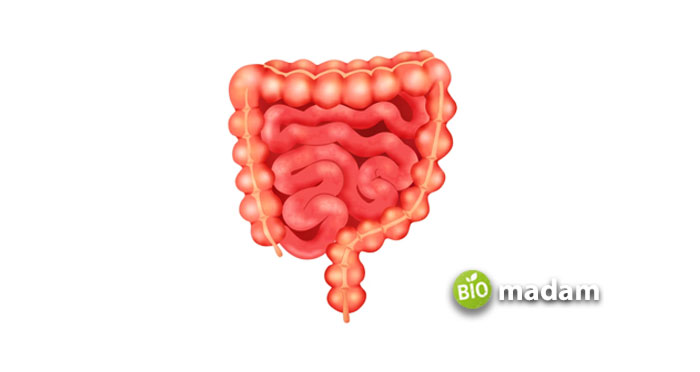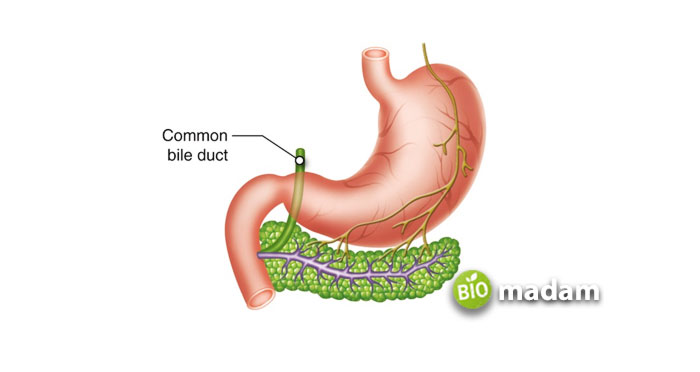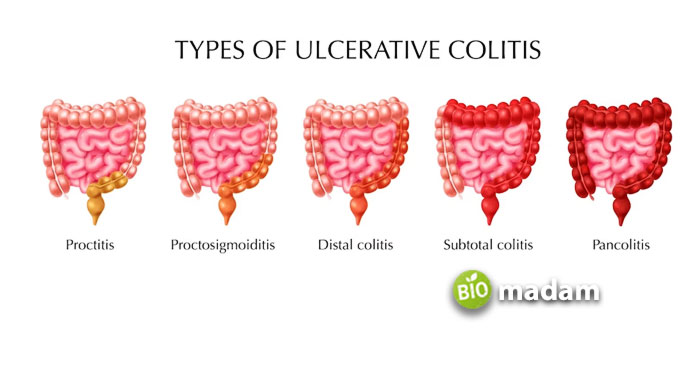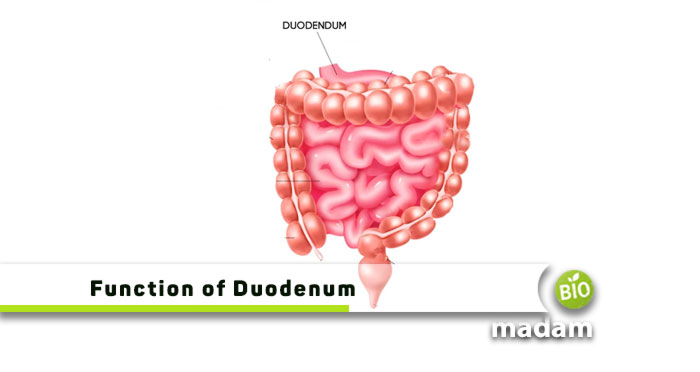The human body is composed of trillions of cells that combine to make tissues responsible for the working of major organs. Thus, your body comprises of several organs, such as heart, liver, stomach, lungs, etc. Similarly, the small and large intestines are two of these essential organs connected with the stomach that also play a major role in the digestive system. The small intestine is narrower than the large one, primarily functioning for the digestion and absorption of food. It is further divided into three parts called the duodenum, jejunum, and ileum. We will discuss the duodenum, its anatomy, functions, and associated health conditions in detail.
What is the Duodenum?
The duodenum is the first and the shortest of all parts of the small intestine. It is approximately 8 to 10 inches long that comes connected with the stomach. Thus, the food ingested by the mouth that travels to the stomach further reaches the duodenum for absorption. It serves to mix the food with bile and enzymes to digest it properly and shift the mixture to the next parts. Note that the duodenum is the primary part of the small intestine helping it break down the nutrients and making them available for the blood and plasma.

Let’s continue to know more about the anatomy and main functions of the duodenum in detail.
Anatomy of the Duodenum
Duodenum is a C-shaped structure that falls in the upper abdomen of the body. Although just a few inches long, it typically has four necessary segments, all anatomically unique. These are:
Superior Segment
It is a C-shaped segment, also called the “cap,” which creates a curve around the upper part of the pancreas. The special “ampulla of Vater” allows the bile and pancreatic duct to enter this segment. The superior section of the duodenum is responsible for receiving and mixing bile and pancreatic enzymes with the chyme that comes from the stomach. It is more prone to getting a duodenal ulcer.
Descending Segment
Just after the superior comes the descending segment. It is attached to the posterior abdominal wall by the ligament of Treitz. Furthermore, the descending section lies anterior to the right kidney. The primary function of this part is to continue mixing the food particles and neutralizing the acidic chyme with bicarbonate secreted by the pancreas.
Horizontal or Inferior Segment
It is the shortest of all four segments that run diagonally to the abdomen. The inferior part of the duodenum is responsible for connecting the descending and ascending portions to allow proper mixing and digestion of the chyme. Moreover, some of the nutrients and water are also absorbed here.
Ascending Segment
This segment ascends towards the jejunum and is continuous with the third segment. It is the widest part of the duodenum and is liable to complete the digestion and absorption of nutrients before the chyme passes to the jejunum.
Digestive Functions of Duodenum
As discussed a little in the above anatomy, we now know that the duodenum, a part of the small intestine, is mainly involved in the breaking down and absorption of macro and micronutrients required by the human body. It is also called the “mixing pot” of the small intestine as the churning process of food begins here. The prepared chyme helps in easy absorption. Chyme is typically a thick semifluid coming from the stomach due to partial digestion of food by digestive secretions.
However, the chemical digestion of food starts from the mouth when it is swallowed and mixed with saliva. It travels down the esophagus towards the stomach, where chyme is prepared. This chyme then mixes with the pancreatic juice in a basic solution to neutralize the acidity. The duodenum acts to absorb the vitamins, minerals, and other essential nutrients from this slimy liquid. Furthermore, chyme also helps break down fats and different types of proteins in the proceeding parts of the small intestine.

Some of the essential duodenum functions are:
Receiving Chyme from Stomach
The superior part of the duodenum receives the partially digested food, called the chyme, from the stomach.
Neutralization of Stomach Acid
It releases the bicarbonate ions that help neutralize the acidic chyme arriving from the stomach. It is equally essential as other functions because the enzymes of the intestine work at their best in an alkaline medium.
Promoting Digestion
The digestive enzymes are received from the pancreas and bile from the gallbladder and liver in the duodenum. They help break down carbs, proteins, and fats into smaller particles for easy absorption.
Absorption of Nutrients
The duodenum also absorbs nutrients like iron and calcium and water-soluble vitamins like vitamins B and C.
Secretion of Hormones
Duodenum is also involved in secreting two critical hormones, called the gastrointestinal (GI) hormones. These are Secretin and Cholecystokinin (CCK). These hormones stimulate the pancreas to release digestive enzymes and the gallbladder to release bile. Furthermore, secretin helps neutralize the duodenal acidity, thus, diluting the pH level.
Health Conditions Associated with Duodenum
The changes in normal anatomy or physiology of the duodenum or small intestine may lead to acute or chronic conditions and even diseases in the human body. Let’s briefly discuss them below:
- Inflammatory Bowel Disease (IBD): The inflammation in the duodenum walls or stomach may lead to bowel diseases. Inflammatory bowel diseases generally have two types, also called autoimmune diseases. These are Crohn’s disease and Ulcerative Colitis. The former of the two has a direct influence on the functioning of the duodenum; however, the latter doesn’t affect it.

- Celiac Disease: This condition is particularly triggered by eating gluten or wheat products. The walls of the small intestine, especially the duodenum, are damaged over time by people having celiac disease. In other words, this health condition is a common cause of abnormal duodenal histology.
- Duodenitis: The intestinal condition which appears as a result of severe inflammation of the duodenal lining is called duodenitis. Patients who are already experiencing gastritis are more prone to getting duodenitis. Besides, excessive alcohol consumption can result in this problem. Some causes of duodenitis include bacterial, viral, or fungal infections. Similarly, overuse of NSAIDs can also inflame the intestine lining. If not rightly treated on time, the condition may progress to duodenal ulcer. So, it’s better to take analgesics and antibiotics to treat the condition.
- Duodenal Cancer: Although very rare, duodenal cancer still exists. The exact cause of this cancer is unknown, but common risk factors could be age, poor diet, genetics, excessive smoking, and alcohol consumption.
The Bottom Line
Small intestine has a prominent role in the normal functioning of a body. All of its three parts, including the duodenum, jejunum, and ileum, are significant. An average person has an almost 6.5m long intestine that is involved in the digestion and absorption of food particles, containing essential nutrients, proteins, vitamins, minerals, and quantities of water. So, a person needs to eat and stay healthy to avoid severe health conditions that can worsen the digestion process. You can take probiotics to keep your gut healthy and to avoid taking antibiotics in future.
FAQs
What happens if the duodenum is removed?
Duodenum is an essential part of the small intestine that helps in the digestion and absorption of food. So, if removed, the stomach would not be able to retain the food for long, resulting in a condition called “Postgastrectomy Syndrome.”
What foods can heal duodenitis?
Foods rich in fiber, such as oats, wheat, barley, beans, and lentils, can help reduce the inflammation in the duodenum. Moreover, antibiotics are prescribed if the duodenitis is due to a bacterial infection.
What enzymes are present in the duodenum?
The small intestine, including the duodenum, is responsible for secreting different enzymes for the breakdown of food. These include maltase, lactase, sucrose, and peptidase.
What causes damage to the duodenum?
Duodenum can be damaged by multiple underlying diseases, disorders, or infections. One of the fundamental causes is bacterial infection by the microorganism called Helicobacter pylori, H. pylori. This bacteria attacks the lining of the duodenum and inflames it. If not treated, the duodenitis can progress to an ulcer.
Can a parasite reside in the duodenum?
An intestinal protozoal parasite called the “Giardia duodenalis” is usually located in the upper small intestine. This parasite transmits a diarrheal disease known as “Giardiasis.” Once you get infected with the disease, the parasite will live in the intestine, which is passed on by the stool.

Anna has completed her degree in Pharmacy from the University of Hawaii. She is serving as a research assistant in a pharmaceutical company. She had a great interest in writing blogs, traveling to different parts of the US, and trying delicious recipes in her spare time.

